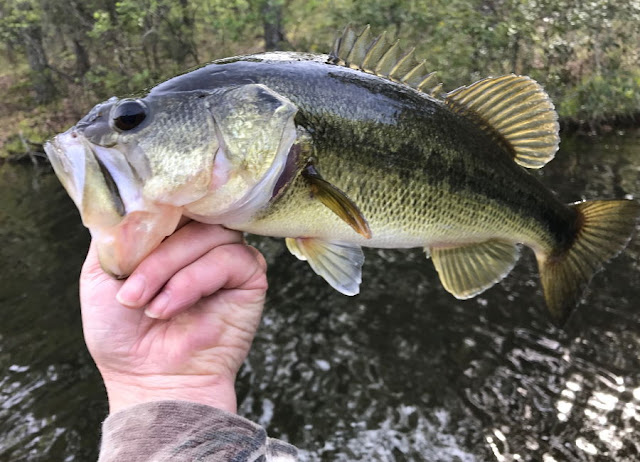How To Choose Fishing Line For Bonefish
The fly line is the consumable element of your outfit that should be replaced as soon as it becomes worn, damaged or loaded with water after a dunking. But for all other times you'll want to select the right type and size of fishing line for each cast and technique.
How To Choose Fishing Line For Bonefish
Choosing the proper fishing line for bonefish should be based on the conditions under which you'll be fishing.
I recall a time in North Carolina when there were bumper-to-bumper cars and loud-music to my left while beautiful seagulls, pelicans and wading anglers filled my world to the right. I held a four weight in my hand, no reel in sight. I was handed a fly rod that had been reinforced with duct tape at the guides and tied to a steel leader that looked like it could have fought off the biggest Goliath.
The wind was blowing 30 MPH across the flat, pushing waves ahead of it - not good for casting but perfect for this approach. The angler wanted to know if we could throw grasshoppers and ants at the birds, just for grins. He assured me that it wouldn't take much to entice a strike from one of them pelicans - they had been eating all kinds of fish scraps from the few boats that were already out.
The fly line was not a problem as I simply leader-switched several times until the wind allowed a smooth presentation. The steel leader was another matter, as it kept tangling with my line and needed constant attention.
In this chapter we will outline the pros and cons of the various types of fishing lines available for use on a fly rod - mono, braid and fluorocarbon.
Monofilament fishing line, the original fly-fishing product, remains one of the most popular choices for anglers and is still a great option for catch bonefish. Monofilament has several advantages:
It comes in a range of diameters and colors and provides good knot strength and abrasion resistance.
Monofilament is economical and available in bulk spools, which makes it the least expensive type of fly line. It can be used effectively on almost any fly rod (a few very fast-action rods may not load properly with monofilament) and has some advantages when fighting fish, making it a good option for beginners.
Mono has a number of disadvantages as well: It's heavy and has relatively low sensitivity, making it difficult to detect subtle takes. Mono also absorbs water easily and quickly becomes dangerously heavy if you nick the line on coral or rocks - even underwater vegetation will make it sink like a rock! Finally, mono floats (or rather doesn't) so it's no good for fishing in the top few inches of the water column.
In fact, you should always have at least a little mono on your line whether you're fishing from a boat or wading flats. Mono is low-visibility and has practically no stretch, so it will alert you to any movement of the fly that might occur when a bonefish picks up your fly.
Braided fishing lines are designed to solve all of mono's problems, at least in theory. They're made from many tiny strands of line wound together in a process called "braiding". A braided line is typically very thin (overall diameters range from 0.004" - 0.020") and it floats because it contains a high percentage of trapped air within the braid itself.
Denser-weave braids are strong, abrasion resistant and have very little stretch in the initial part of the fight - just what you need for bonefish.
Braided lines come in several colors but are most commonly available in white, pink and smoke. They also come with or without a hard outer coating (also called "texture") that makes them easier to grip during the cast.
As you might expect, braids have some disadvantages: They're expensive and they require special reels and fittings because of their thin diameter. The lack of stretch also means that you'll miss more subtle takes.
Fortunately, braided lines are relatively easy to cast - even in windy conditions. However, be aware that they have a tendency to snag so you'll need to watch your fly line carefully for signs of wear - if it looks fuzzy or frayed at all, replace it immediately! The heat from the sun can also damage mono lines if they lie on the surface of the water for any length of time, but this is less likely to happen to braids.
Fluorocarbon fishing line doesn't absorb water, has almost no stretch and comes in a range of densities that are nearly invisible underwater. It's also expensive, requires special reels and can be hard to work with. The main problem is that fluorocarbon lines don't cast well through the guides on your fly rod, so you'll need an extra spool or two if you plan to use this type of line.
https://www.blogger.com/blog/posts/1542079965504064161
https://www.blogger.com/blog/posts/6444275202387597017
https://teehandy.wordpress.com/
https://teehandy.mystrikingly.com/





Nhận xét
Đăng nhận xét